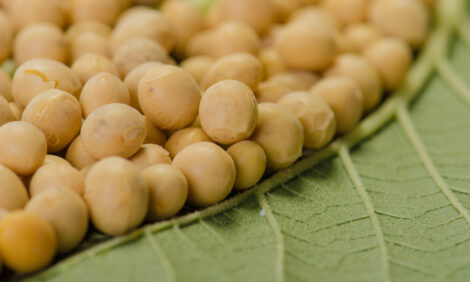



Gene Identified in <em>Strep suis</em> Virulence
CANADA - Researchers have identified a gene in Streptococcus suis that is involved in the bacteria's virulence.Laetitia Bonifait of the University of Laval and co-authors from the University of Montreal and the UK's Royal Veterinary College have investigated the virulence determinant for S. suis, and their paper has been published in BMC Microbiology.
S. suis is a major swine pathogen and zoonotic agent that mainly causes septicemia, meningitis and endocarditis, explain the researchers. It has recently been suggested that proteinases produced by S. suis (serotype 2) are potential virulence determinants.
In the present study, they screened an S. suis mutant library created by the insertion of Tn917 transposon in order to isolate a mutant deficient in a cell surface proteinase. They characterised the gene and assessed the proteinase for its potential as a virulence factor.
Two mutants (G6G and M3G) possessing a single Tn917 insertion were isolated. The affected gene coded for a protein (SSU0757) that shared a high degree of identity with Streptococcus thermophilus PrtS (95.9 per cent) and, to a lesser extent, with Streptococcus agalactiae CspA (49.5 per cent), which are cell surface serine proteinases. The SSU0757 protein had a calculated molecular mass of 169.6 kDa and contained the catalytic triad characteristic of subtilisin family proteinases: motif I (Asp200), motif II (His239) and motif III (Ser568). SSU0757 also had the Gram-positive cell wall anchoring motif (Leu-Pro-X-Thr-Gly) at the carboxy-terminus, which was followed by a hydrophobic domain.
All the S. suis isolates tested, which belonged to different serotypes, possessed the gene encoding the SSU0757 protein. The two mutants devoid of subtilisin-like proteinase activity had longer generation times and were more susceptible to killing by whole blood than the wild-type parent strain P1/7. The virulence of the G6G and M3G mutants was compared to the wild-type strain in the CD1 mouse model. Significant differences in mortality rates were noted between the P1/7 group and the M3G and G6G groups (p<0.001).
In conclusion, the researchers were able to identify a gene coding for a cell surface subtilisin-like serine proteinase that is widely distributed in S. suis. Evidence were brought for the involvement of this proteinase in S. suis virulence.
Reference
Bonifait L., M. de la Cruz Dominguez-Punaro, K. Vaillancourt, C. Bart, J. Slater, M. Frenette, M. Gottschalk and D. Grenier. 2010. The cell envelope subtilisin-like proteinase is a virulence determinant for Streptococcus suis. BMC Microbiology 2010, 10:42. doi:10.1186/1471-2180-10-42
Further Reading
| - | You can view the full report by clicking here. |
| - | Find out more information on streptococcal infections in pigs by clicking here. |








